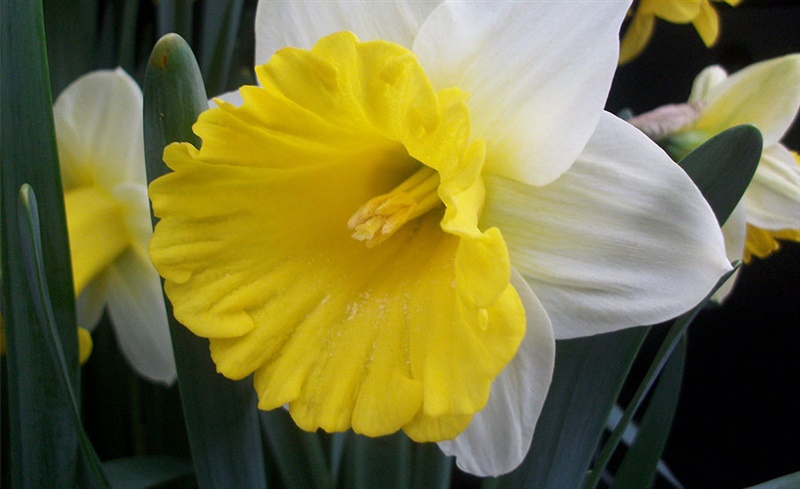The King of Spring
My favourite flower: the daffodil – over 45,000 different cultivars from the recognisable yellow trumpet to the miniature hoop petticoats and now is the time to get planting!
As Editor of The Daffodil Society, of course I am biased towards their petalled perfections, however I’m sure you’ll agree that no other plant competes for the crown of spring.
There are just so many different types to grow, categorised into 13 different divisions. Division 1 is your trumpets, division 4 are the doubles (more like dahlias than daffodils) and division 8 is the sweet smelling tazettas which often fly over from The Isles of Scilly to adorn our tables from the festive season onwards. From yellow to white, orange to red and pink to lilac, with a sprinkling of green centres thrown in for good measure, forget a colour for every season, this is every colour for one season!

Double Flowered Narcissi Mixed
The way daffodils are described via colour and type is as follows: A number is used for their division followed by a dash and letter for their colour, starting at petal colour, working inwards to the cup centre. So a white petalled small cup (division 3) daffodil with an orange cup would be described as: 3-W0 – a little complicated and rather like a lingerie sizing, but handy when you’re collecting lots of these darlings!
I do love the doubles, fancy layers of frills, like giant powder puffs on sticks. Always eye-catching at the daffodil shows. One I adore from the 1930s is ‘Mary Copeland’ – beautiful scent although not quite the supersized blooms that more recently bred doubles display. You can’t go wrong with ‘White Lion’ – offspring of the aforementioned Mary: white and yellow and a good doer, follow Bakker Spalding’s lead and team it with the pink and white ‘Replete’ from the 1970s for a dynamic springtime duo.

Fragrant Narcissi Mixed
If I were to pick a favourite, it would have to be one named after me by the fabulous Irish Breeder: Brian Duncan. It’s called ‘Camilla Clara Kate’ with white petals and a red/pink rimmed cup. I have just taken delivery of 40 bulbs and hope that she, and I for that matter, remain long lasting and blemish free! (Not yet on the market – so I’d better make sure I look after them)!
Anyway, must rush, please do excuse me, off to explain to an over-enthusiastic squirrel that I do not need his help in the re-positioning of my prized bulbs. Long live the daffodil and all who plant her!
Written by: Camilla Bassett-Smith
Visit www.spaldingbulb.co.uk to look at their amazing range of daffodil bulbs!



















